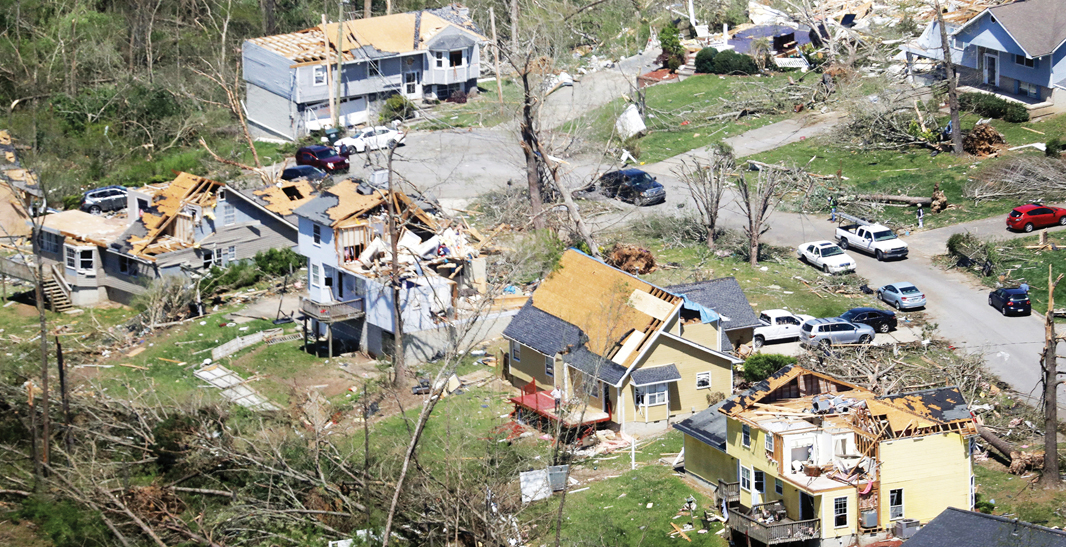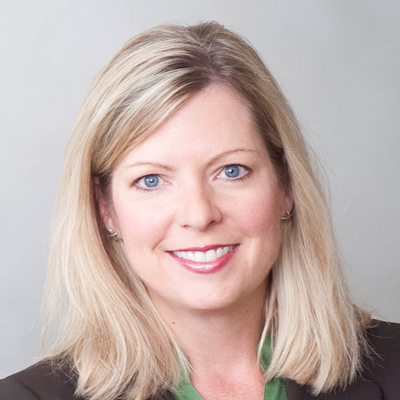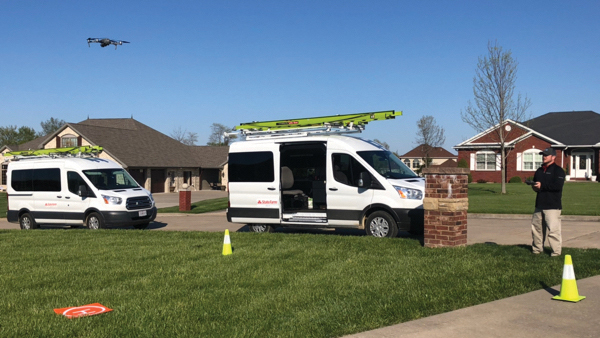Catastrophes: Claims Adjusters
A Permanent Adjustment
After spring storms cause damage, the COVID-19 crisis brings new challenges and approaches for claims professionals. Special Risk Section sponsored by Lexington Insurance.
- Renée Kiriluk-Hill
- June 2020
-






AFTER THE STORM: Tornadoes damaged homes and property on a street in Chattanooga, Tennessee in early April.
AP Photo/Mark Humphrey
The Catastrophe Special Section is sponsored by Lexington Insurance. Click on the microphone icon to listen to the Lexington Insurance podcast.
Key Points
- What Happened: Spring storms hit the southern and Midwest states causing damage as the COVID-19 pandemic was unfolding.
- Impact: Due to social distancing orders, insurance adjusters had to widely forgo personal visits to assess damage and turn to video chats, email and drone technology to settle claims.
- Looking Ahead: Facing uncertainty due to the pandemic, insurers and their adjusters say the use of technology to settle claims may become a permanent solution.
The coffee stations that policyholders gather around at mobile automobile claims centers are gone. So are the personal reassurances claims adjusters give out to customers—hugs, handshakes and pats on the back. Video chats, emails and phone calls have replaced one-on-one interactions with claimants. The COVID-19 pandemic has stolen insurance adjusters' personal touches.
Adjusters had to change their approach to claims handling after multiple severe storms hit southern and Midwest states between late March and mid-April. The largest property/casualty writer in the United States, State Farm, received nearly 36,000 claims from the round of bad weather. But in the meantime, COVID-19 had spread throughout the country and ushered in the need for safety protocols such as social distancing.
“We're built on agent and one-on-one interactions with customers,” spokesman Chris Pilcic said. “Claims specialists spend their careers traveling the country, helping people in their worst moments. They look forward to the opportunity to shake someone's hand, or give them a hug and tell them everything's going to be OK.”
Quietly he added, “It all just looks a bit different right now.”
The new age of adjusting, in which almost all claims are handled remotely, was born.
And it could become permanent, according to claims professionals.
A Different Approach
State Farm is leveraging technology and offering virtual claim handling when appropriate, said spokeswoman Michal Brower. To limit in-person contact it “encourages customers to take advantage of potential options for virtual inspections” where legally permitted.
When a site visit is needed, State Farm has additional safety protocols in place. “Every case and situation is a little different,” but customers are regularly submitting photos or videos—after connecting on a video chat—of damage, Pilcic said. Payments are sent electronically. At State Farm, mobile auto claims centers' drive-through lanes are wider and available only by appointment. Policyholders are asked to remain in their vehicles, communicating via phone.

Most property and casualty insurers are already capable of acting 95% remotely, or more, which has allowed them to continue handling claims efficiently during the pandemic.
Sharon Stuart
International Association of Defense Counsel
The company deployed a drone team to Missouri's capital, Jefferson City, following a large-size hailstorm on March 27. “Customers appreciate the different options they have,” Pilcic said.
The impact of the virus is being discussed at every level, said Cullen Sophy, managing director and head of claims and catastrophes services at international insurance services company Charles Taylor.
“There has been a significant change, across the board in all of insurance. As large-loss adjusters, we're the eyes and ears of the insurance community,” said Sophy.
Charles Taylor adjusters are racking up far fewer air miles and using more artificial intelligence, online mapping services and drone footage.
Adjusters who need to travel during the pandemic will meet with two or three people at a loss site instead of potentially dozens. They interview other claimant employees via phone or email. “That's a huge adjustment,” said Sophy. “A lot is being done in the back office now.”
Technology to the Rescue
Personal lines policyholders are more willing to electronically document damage and submit claims. In commercial lines, investments in technology are paying off amid travel restrictions and business shutdowns. Adjusters in both segments are using more eyes in the sky, from Google maps to drones.
Carriers and adjusting companies employ technology and triage to process claims and meet virus safety goals, according to Sharon Stuart, chair of the Insurance and Reinsurance Committee of the International Association of Defense Counsel.
“Most property and casualty insurers are already capable of acting 95% remotely, or more, which has allowed them to continue handling claims efficiently during the pandemic.” Auto claims have fallen 30% to 60% during shelter-in-place orders, said Stuart, but first-party property and health insurance claims have risen, as have policyholder claims complaints to state insurance departments, causing a shift in duties for claims employees and in-house counsel.
The level of loss also dictates how a claim is documented—via electronic submission or physical inspection and evidence collection. “COVID-19 claims are likely going to be handled like other cat losses; uploading photos often will not substitute for in-person inspection,” said Stuart, but where the virus-inspired claims changes are effective, they could become permanent.

AT WORK: Casey Jones, a State Farm claims specialist, uses a drone to inspect damage to a residence in Jefferson City, Missouri following a late-March hail storm.
State Farm - photo taken by Kevin Gamble
More Claims to Come
Charles Taylor already used drones and satellite imagery, and Sophy said he thinks the coronavirus changes are speeding up integration in the workflow as the technology complements the work of claims adjusters.
Over the long run, he anticipates a significant jump in coronavirus late claims reporting, a departure from many traditional catastrophe claims. For instance, he said shutdowns rolled out in the middle of the spring apparel season, stranding what is now mostly unsaleable product in factories or on ships.
That season is gone, but the product isn't—one of many complicated claims situations he foresees when shipping and factories resume operations.
“This is different from anything we've seen— it's happening everywhere in the world,” he said. “Every insurance policy you can imagine will be affected greatly” and complicated further by virus-related litigation, legislation and government bailouts.
Claims also may rise as businesses reopen and owners discover damage such as a water leak or vandalism, said Sophy. “We could see a huge increase because people weren't there to inspect buildings. There are a lot of unknowns.”
Claims volumes declined in auto and some commercial lines as shelter-at-home protocols took effect, said Erol Kantar, Raphael & Associates executive vice president of operations. “The exception is that there has been an uptick in claims for business interruption, workers' compensation virus claims and vandalism claims,” he said.
Raphael & Associates handles claims in lines ranging from property, liability, workers' compensation and auto/transportation to yacht/marine, fine arts and professional liability. The greatest percentage is in commercial property/liability and homeowners.
His company employs about 500 at multiple locations across the country, with a large presence in the two states with the highest number of confirmed COVID-19 cases—New York and New Jersey. While the Northeast was deemed a hot spot, Kantar said the company rolled out social distancing and work-from-home programs nationally.
The majority of hardware and software investments enabling work-from-home occurred prior to the outbreak, said Kantar. “We have had the ability ... as part of our standard catastrophe protocol, so it was not a difficult transition for our staff,” even as the number of employees doing so climbed. With regional outposts, Kantar said field adjusters already drove cars to appointments and therefore haven't been impacted by mass transit schedule changes.
“I believe hosting software programs in the cloud will be a permanent part of claims organizations going forward,” said Kantar. “Cloud hosting allows more staff to work remotely, which will also be a trend moving forward.”
A Local Approach
The depth of caution deployed can be regional or even site-specific. Alfa Insurance has a large customer base in the rural South. Claims adjusters live throughout the carrier's three-state coverage area, where local claims employees open the doors for appointments only, said spokesman Jeff Helms.
Because of the virus, office surfaces are disinfected between appointments and hand-washing protocols are in place. On April 16, Alfa was still awaiting a shipment of face masks for adjusters, with some employees wearing their own face coverings.
In the field, Helms said social distancing was the primary change during the outbreak. “It doesn't require a lot of person-to-person contact. They are being careful with any exchange of paperwork,” he added.
Jamie Yoder, the president of virtual claims solutions provider Snapsheet, recently advised carriers to use the current situation as a catalyst to drive a stronger digital transformation agenda. “Not just replace with a text back, but truly change the way we interact,” he said.
Learn More
State Farm Group (A.M. Best # 00088)
For ratings and other financial strength information visit www.ambest.com
Renée Kiriluk-Hill is an associate editor, BestWeek. She can be reached at renee.kiriluk-hill@ambest.com.



























